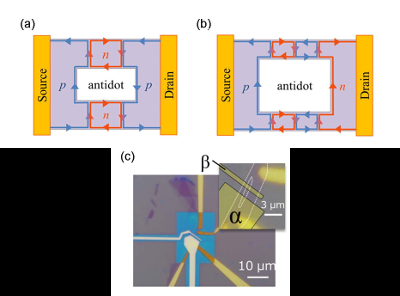Parity effect observed in graphene

Researchers have theoretically projected and successfully proven through experimentation the parity effect of the quantum Hall edge transport in graphene antidot devices with pn junctions (PNJs). Graphine, or single-layered graphite, has properties of both metals and semiconductors.
This group confirmed that the parity effect in graphene antidot devices has a good analogy to optical systems. This means various quantum interference devices can be produced by using the quantum hall edge transport with pn junctions.
The parity effect of the quantum Hall edge transport in graphene is a new ubiquitous phenomenon in massless Dirac electron systems. First, the researchers theoretically studied a graphene device with an antidot and multiple pn junctions (PNJs) and obtained a new compact formula to show a significant parity effect regarding the number of PNJs.
Then they experimentally realized such graphene devices to confirm the new formula. This achievement is the first to establish the parity effect on bipolar quantum Hall edge transport in massless Dirac electron systems and is an important step forward to design new electron interferometer devices using graphene.
More information: "Parity effect of bipolar quantum Hall edge transport around graphene antidots." Scientific Reports 5, Article number: 11723 DOI: 10.1038/srep11723
Journal information: Scientific Reports
Provided by National Institute for Materials Science




















